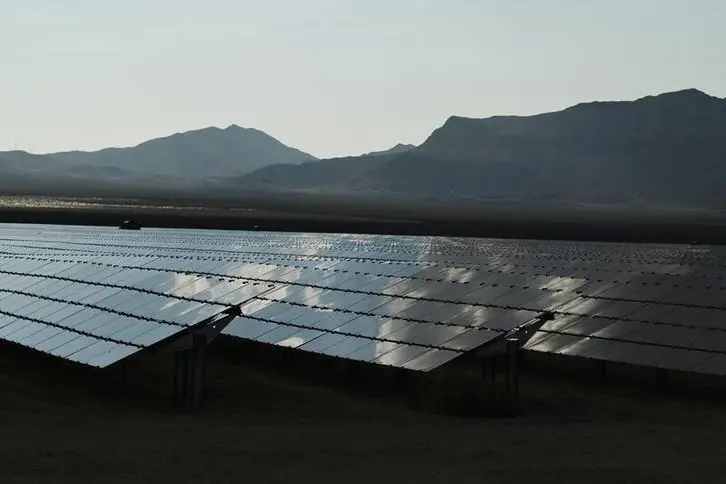PHOTO
Solar panels are seen at the Desert Stateline project near Nipton, California, U.S. August 16, 2021. Bridget Bennett, Reuters Image used for illustrative purpose.
The U.S. solar industry expects to add a record 32 gigawatts (GW) of production capacity this year, up 53% on new capacity in 2022 and helped by investment incentives under the Inflation Reduction Act, a report published on Thursday showed.
The report by the Solar Energy Industries Association (SEIA) and Wood Mackenzie estimated total operating solar capacity would grow from 153 GW currently to 375 GW by 2028 as supply chain challenges brought on by the COVID-19 pandemic and restrictive trade policies abate.
Increased investment in domestic manufacturing could see U.S. solar module production grow tenfold by 2026 if all new factory plans materialise, Wood Mackenzie said.
"In the year since its passage, the IRA (Inflation Reduction Act) has undoubtedly caused a wave of optimism across the solar industry," said Michelle Davis, head of global solar at Wood Mackenzie.
The Biden administration's 2022 Inflation Reduction Act allocates about $370 billion toward climate change and clean energy efforts, including incentives aimed at promoting solar and wind power.
"Announcements for domestic module manufacturing have exploded, promising more stable solar module supply in the future. Now the challenge becomes implementation," Davis added.
In February, the Energy Information Administration (EIA) said U.S. developers have plans to add 54.5 GW of fresh electric generating capacity in 2023, with over 50% of it driven by solar energy sources.
The utility-scale and residential solar markets led the way with new capacity additions in the second quarter, mainly as customers in California rushed to install solar before changes to net metering rules took effect, the report said.
Florida continues to dominate the 2023 state solar rankings, installing 2.5 GW of new capacity in the first half of this year, the report stated.
(Reporting by Anushree Mukherjee and Harshit Verma in Bengaluru; Editing by Susan Fenton)





















